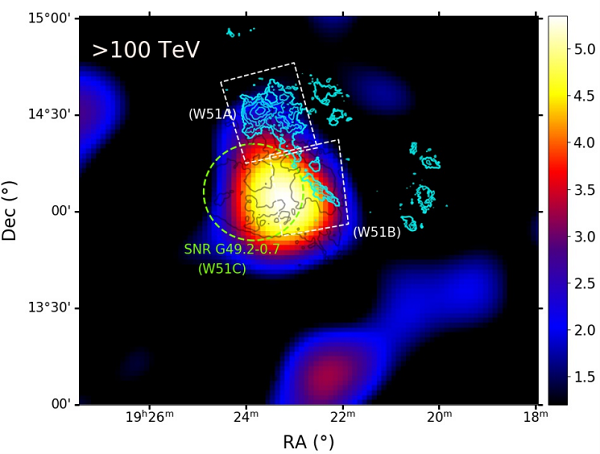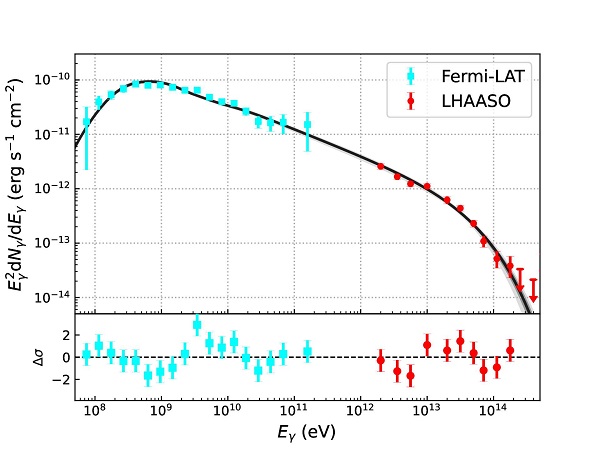LHAASO Reveals Key Evidence of Cosmic Ray Acceleration Limit in W51 Complex for First Time
The Large High Altitude Air Shower Observatory (LHAASO) officially released the precise measurements of high-energy gamma radiation from the W51 complex, confirming it as a cosmic-ray accelerator boosting particles up to so-called ultra-high energies (UHE, above 1014 electronvolts). This study also provides key evidence about the cosmic-ray acceleration limit in this complex. The findings, entitled "Evidence for particle acceleration approaching PeV energies in the W51 complex," were published online in Science Bulletin on July 16. The research was conducted by the LHAASO International Collaboration, led by the Institute of High Energy Physics of the Chinese Academy of Sciences.
The W51 complex is one of the largest and the most active "stellar factories" in the Milky Way and one of the few regions confirmed to host GeV energy cosmic-ray accelerators. It plays a crucial role in unraveling the century-old mystery of the "origin of cosmic rays". Researchers utilized data from the LHAASO experiment to, for the first time, extend the measurements of the energy spectrum of gamma-rays from this region to the UHE range. They clearly observed a "bending" structure in the gamma-ray spectrum at tens of TeV, indicating the acceleration limit of cosmic rays in this region.
The energy spectrum measured by LHAASO can be smoothly connected with that was measured by the Fermi-LAT collaboration at lower energies. Spanning six orders of magnitude of gamma-ray energy, the spectrum provides important evidence that the radiation originates from collisions between cosmic rays and molecular clouds. It also indicates that the W51 complex has a cosmic-ray acceleration limit of around 400 TeV. “The supernova remnant W51C, located in the W51 complex, is the most plausible cosmic-ray accelerator responsible for the wideband gamma-ray emission”, Prof. LI Zhe said, one of the co-corresponding authors.


Contact Information
Ms. JIA Yinghua
jiayh@ihep.ac.cn

